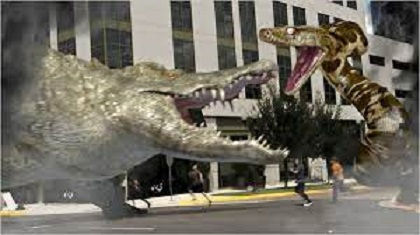Isolation (2005)
- Andrew Smith

- Apr 20, 2022
- 4 min read
Updated: Jul 31, 2022
"It didn't want to be born. Now it doesn't want to die."

Plot
Cash-strapped farmer Dan Reilly allows a local bio-genetics firm to experiment on some of his cows to make them grow faster. However, the experiment goes wrong when one of Dan’s cows gives birth to a calf which is already pregnant with mutated foetuses. During an autopsy, one of the still-living foetuses manages to escape and with an ability to infect cows as well as humans, it is a race against time to stop the creature before it leaves the farm.
In horror, no animal is safe. You’ve got nature’s fearsome predators like sharks and crocodiles which are all too easy to turn into man-eaters. You’ve got spiders which provoke instinctive reactions in a large percentage of people when confronted with one. But cows? The animals that are generally gentle, quite emotional and intelligent, commonly known to ‘moo’, produce milk and generally just stand around all day grazing? Actually, according to statistics, they’re the most dangerous large animal in the UK, killing more people in the last fifteen years than dogs so there might be something there to work with. Perhaps Isolation was made about ten years too late to capitalise on the mid-90s BSE scare in the UK (commonly referred to as mad cow disease), where thousands of cows were slaughtered to prevent the spread of disease. This type of body horror would have caused a few ripples if audiences thought this sort of thing could happen to them if ‘mad cow disease’ spread rapidly.

OK, so putting aside the notion of a killer cow for a moment, Isolation is a pretty creepy film which does a lot of things right in building an ominous atmosphere in the remote farm setting, borrowing plenty of style and tone from the likes of Carpenter and Cronenberg. First time director Billy O’Brien does a fantastic job in creating the right mood for the film, with the cold Irish countryside becoming a bleak place as the carefully-selected grey and gloomy colour palette offers little hope or vitality for the camera. This doesn’t look like a great place at the best of times, not least when there’s a mutated creature on the loose. O’Brien keeps the film grounded in minimalization for the most part, crafting the story well and slowly building up the mystery as to exactly what has happened and how bad it will get. If there is an issue here, it’s that it takes too long to get to a position where the horror can be unleashed upon the audience. There’s only so much biding time that the script can churn out and Isolation begins to wear a little thin before things pick up. You get the sense, especially if you glance at the running time left, that the payoff won’t be quite as satisfying as you’re expecting it to be.
Isolation does shift into more traditional ‘monster on the loose’ territory in the final third where the matured version of the creature starts to hunt down the survivors and it’s here that the script gives up and resorts to the characters running around in dark places. There are a few parallels with The Thing in the manner of how the infection spreads and there is some underlying body horror but it’s not as explicit as I’d have liked – let’s see one of the human characters explode with blood and goo when the infection has fully spread. Even the creature, looking suitably squirmy and nasty in its smallest form, doesn’t get much time on screen during the stalking and attack scenes. It doesn’t look bad in, well what you actually see of it anyway, but its underused and kept to brief glimpses and dark corners of the farm. Tantalising morsels of what could have been, but we don’t quite get the main course. And that just about sums Isolation up: it promises a lot but doesn’t really deliver when it really counts.

What is nice is that the limited effects on show are all practical and have that realistic vibe that CGI lacks. As the creature is meant to be mutated and defective, there’s no real shape or pattern to it, just lots of blood, flesh and bone all skewed and twisted. There’s a respectable amount of blood on show, with flesh wounds coming out particularly effective thanks to the make-up department. But given the lack of suitable hosts for it to infect, you're going to see an awful lot of killing.
On top of this realistic carnage, the actors do their characters justice and make them believable enough to grab the notion of a killer cow and put it to the back of your mind. John Lynch is solid as Dan: likeable and intense enough to show how desperate he was to resort to allowing the bio-genetics firm to experiment on his cow. Only Marcel Lures as the ‘mad scientist’ comes off remotely hammy in the final third but we all know what happens to that type of character in a film such as this.
Final Verdict
Though Isolation might be a little derivative of some genre classics, it manages to craft a nice, effective mood with some decent moments, only failing to really capitalise on all of the hard work in a final third which doesn’t do the rest of the film justice. Forget any pre-conceived notions of a film about a killer cow being silly – you’ll think twice before you next cross over that farmer’s field.
 |
Isolation Director(s): Billy O'Brien Writer(s): Billy O'Brien Actor(s): John Lynch, Essie Davis, Sean Harris, Marcel Iures, Ruth Negga, Crispin Letts Duration: 95 mins |  |
|---|






